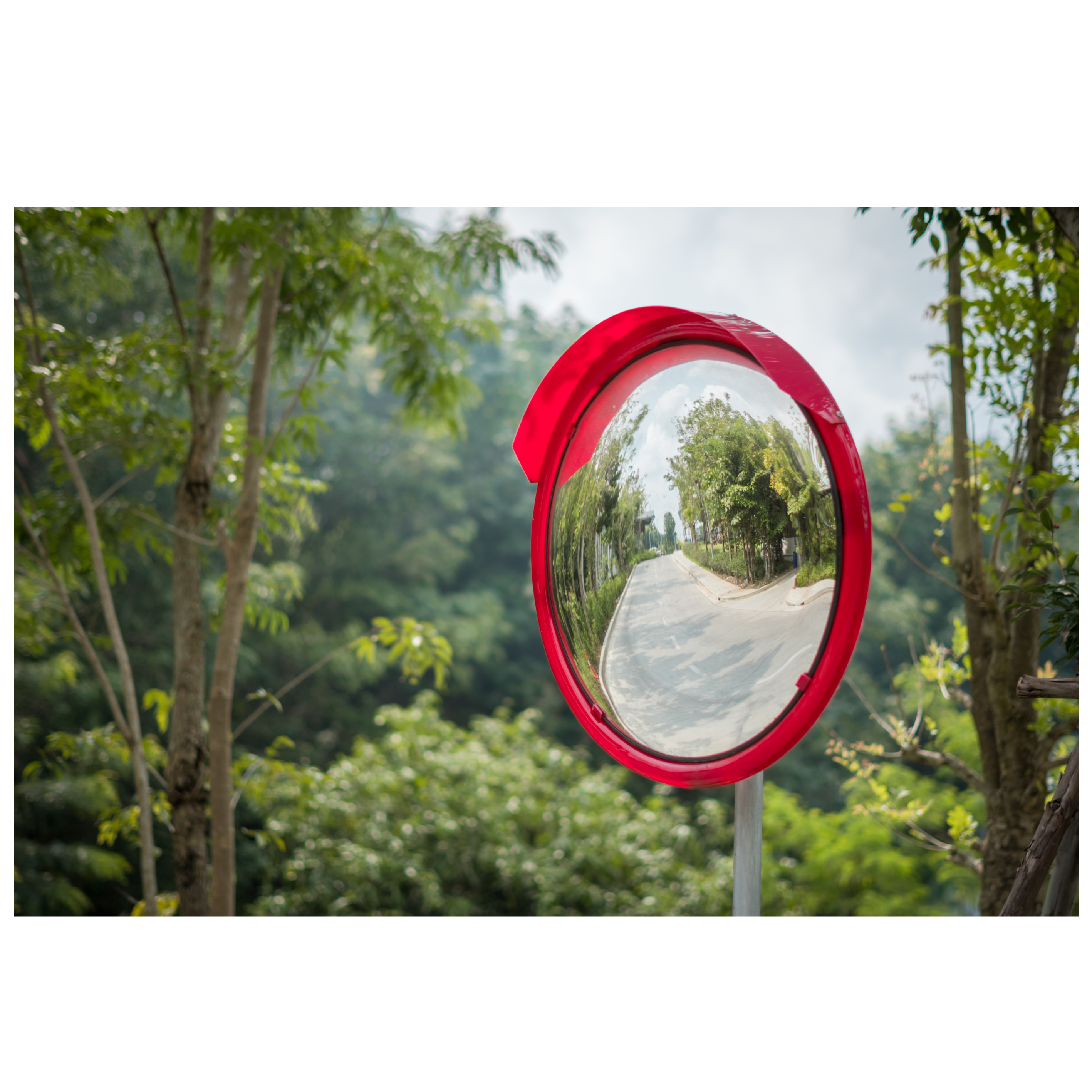
TRAFFIC, INDUSTRIAL AND SECURITY MIRRORS: HOW TO CHOOSE?
15.03.2019
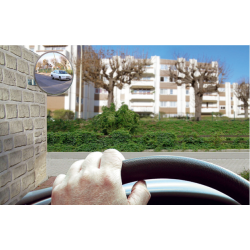
Mirrors are one of the simplest and cheapest solutions to ensure a safer and more secure environment in the workplace as well as on the road. Each type of mirror has its own specific function, so it is important to choose the right mirror and installation location for your needs.Traffic mirrors: intersections, limited visibility exits, blind bends and car parks.
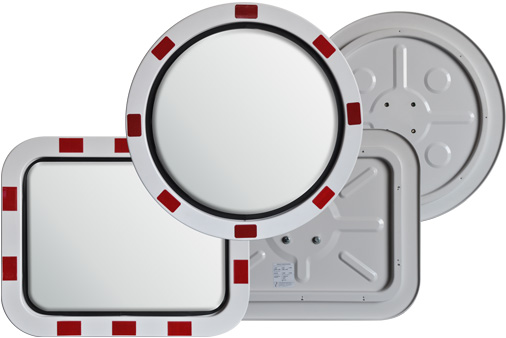 | red-white reflector with a frame that ensures good visibility during the day and at night, resistant to harsh weather conditions.de-icing and de-icing-free traffic mirrors that ensure good visibility in both dusk and winter conditions. |
Industrial mirrors: factories, production buildings, logistics centres and warehouses
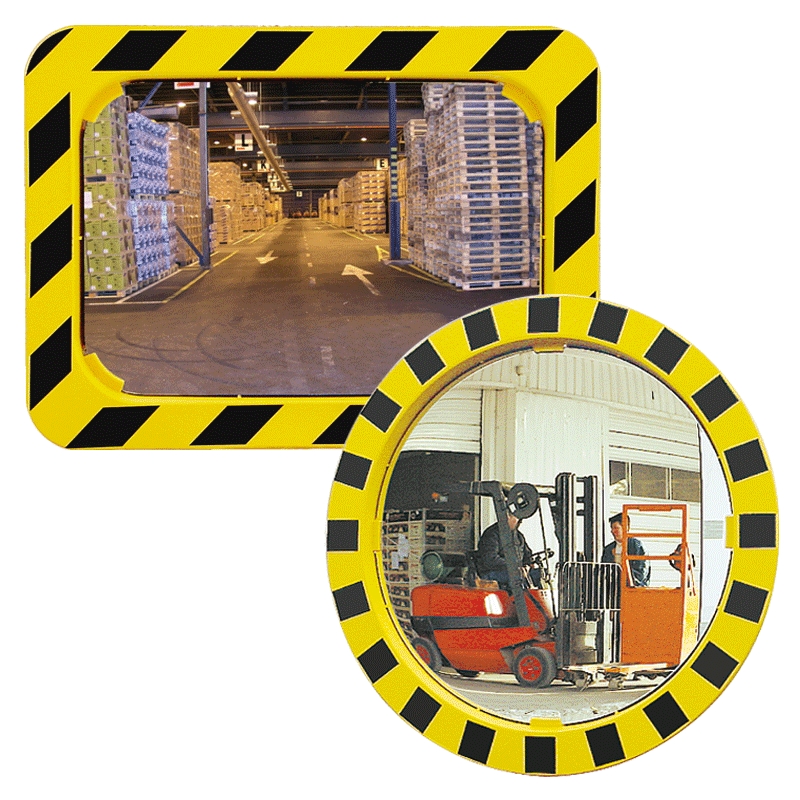 | the yellow-black framed mirror is conspicuous for safer and more secure traffic in the narrowest areas of buildings |
Security rules: shopping malls, shops, petrol stations, schools, detention centres.
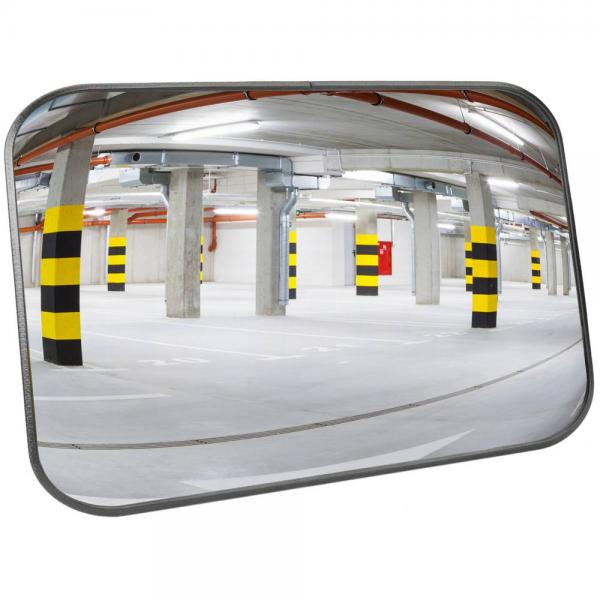 | mirrors with or without black frames, preferably anti-theft and shatter-proof, in inconspicuous public places and in detention facilities. |
When choosing the size of the mirror, the distance between the viewer and the expected position of the mirror must be measured. Each metre corresponds to 25 cm of mirror diameter or width. It is recommended to install a traffic mirror at a height of 2 m.
If the diameter of a circular mirror is 60 cm, the maximum recommended distance is calculated as follows: 60 cm x 25 = 1500 cm or 15 mThe distance of the field of vision of an angled mirror is calculated as follows: width of mirror x 25Note: If visibility from the exit is limited, the traffic mirror must be installed across the road in order to see approaching vehicles. If the distance between the observer's position and the mirror to be installed across the road is 19 m, the minimum diameter of the mirror should be 800 mm or more. In cases where it is necessary to see not only approaching vehicles but also details such as the registration number of the vehicle, a larger mirror is a reasonable choice. An angled, round or other shaped mirror? While exterior mirrors are generally round and square, interior mirrors come in many different shapes. The shape of the mirror determines the extent of the field of view and the number of directions that can be observed. The table below shows the differences in the shape of the mirrors:

Mirror material - acrylic, glass or stainless steel?
- Acrylic - clear visibility, lightweight, reasonably durable and does not shatter. Scratches and spots can occur more easily than on a glass mirror. Well suited for indoor and outdoor use: offices, warehouses, industrial buildings, schools.
- Glass- clear visibility, scratching firm but severe. Correct maintenance and installation will ensure long life. Well suited for medical institutions. Will shatter if dropped or subjected to major mechanical damage.
- Stainless steel - durable and highly weather resistant. Visibility may not be as good as with acrylic or glass mirrors. Shatter resistant, but not dent resistant. Recommended for use in food service, detention facilities, construction sites, gravel roads, amusement parks, and places where there is a high risk of vandalism.
Differences between external and internal mirrors? The main difference between interior and exterior mirrors lies in the material and the mountings. The backs of interior mirrors are often made of materials that are not weatherproof, such as wood or chipboard. Exterior mirrors, on the other hand, are made of weatherproof materials such as plastic or stainless steel. For mirrors installed outdoors, attention must be paid to the fixing - the crowns must be resistant to wind, cold, rain and sun. For larger outdoor mirrors, 2-3 crowns should be used to prevent the mirrors being blown away by the wind.For outdoor mirrors, we recommend frost and condensation free mirrors. There are two types available, some that require an electrical connection and others that do not. Non-electric mirrors store heat during the day and therefore do not allow frost or condensation to form on the mirror.


